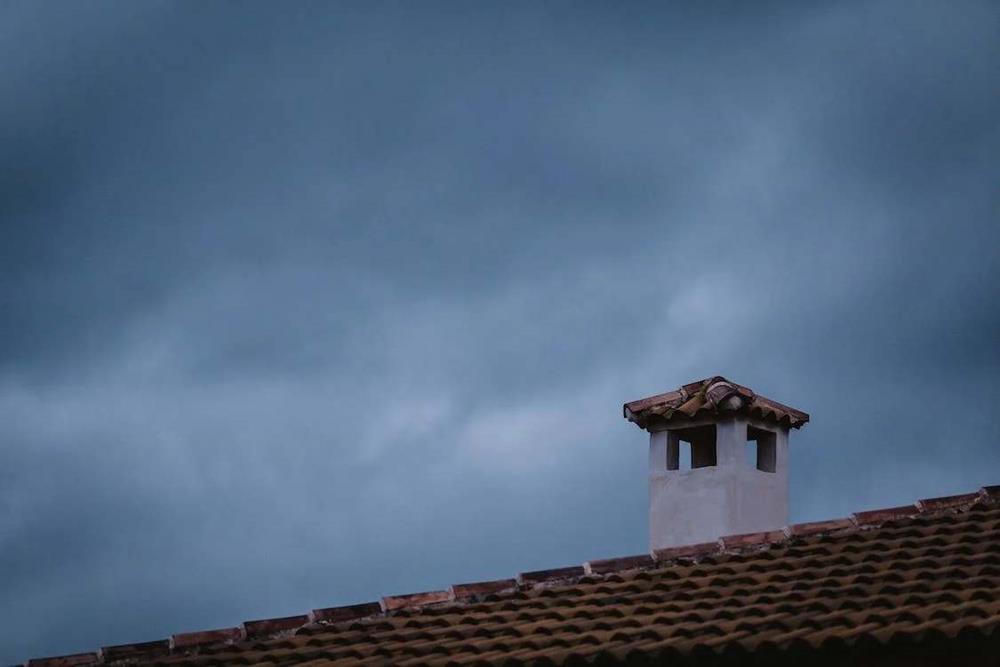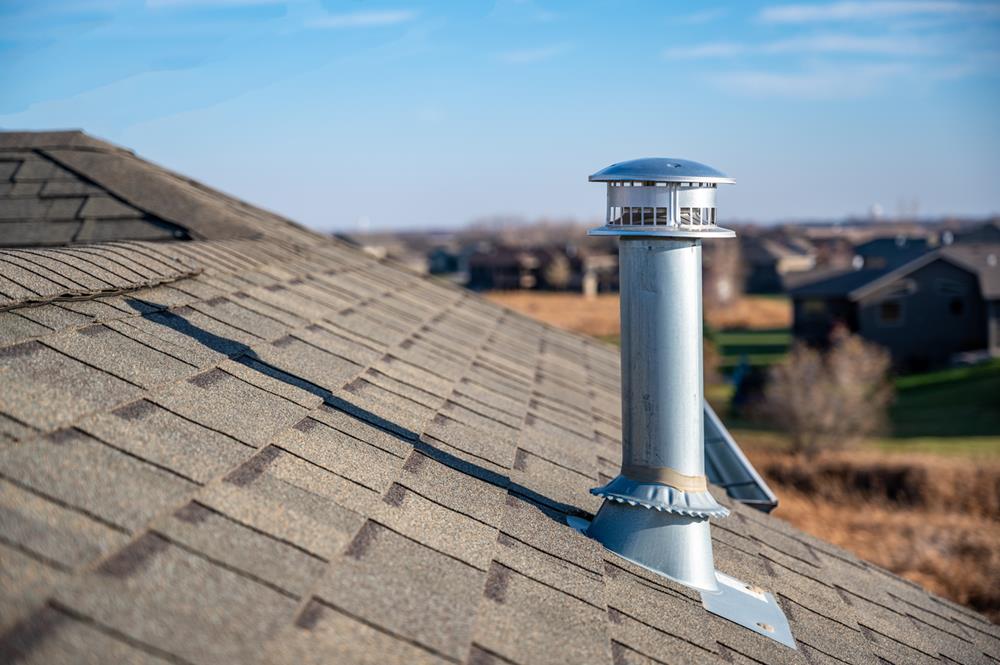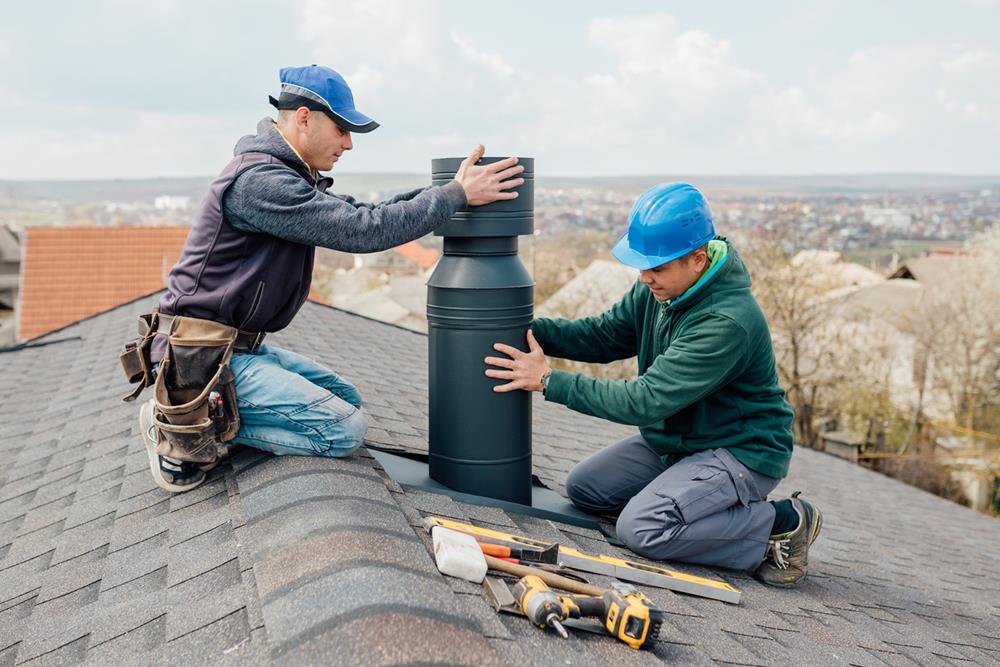When it comes to home design and functionality, chimneys play a pivotal role in ensuring a safe and comfortable living environment. Beyond their practical application of venting smoke or gases, chimneys add architectural character to homes.
With various types available, each suited to different needs and preferences, understanding the options can empower homeowners to make better decisions when choosing the appropriate chimney for their home. This article introduces the main types of chimneys, focusing on their unique features and functionalities.
Masonry Chimneys
Masonry chimneys are a traditional choice that has stood the test of time, blending durability with aesthetic appeal. Constructed from bricks, blocks, or stone and mortar, these structures are known for their robustness and the classic look they provide to a home. A significant advantage of masonry chimneys is their ability to withstand high temperatures and their longevity with proper maintenance. However, they require regular inspections to check for mortar deterioration or structural issues that could lead to leaks or drafts.
Electric Chimneys
Electric chimneys, or range hoods, are essential in modern kitchens to remove smoke, fumes, and odors produced while cooking. These chimneys come in various designs and sizes to fit different kitchen styles and functionalities. They are easy to install and maintain, with filters that need regular cleaning or replacement to ensure optimal performance. Electric chimneys are an excellent choice for homes without a traditional fireplace or where structural constraints make installing a masonry or metal chimney impractical.
Metal Chimneys
Metal, or prefabricated, chimneys are a modern alternative to their masonry counterparts. Made from stainless steel or aluminum, these chimneys are designed for homes that use wood stoves or prefabricated fireplaces. They are easier and quicker to install than masonry chimneys, making them a cost-effective option. Metal chimneys are also known for their safety features, including a double or triple wall construction that insulates and protects the home from heat transfer. However, they may not provide the same traditional aesthetic as masonry chimneys and can require replacement after years of use due to corrosion.
Gas Chimneys
Gas chimneys are designed specifically for homes using natural gas or propane heating systems. These chimneys often use a direct vent system, which draws air from outside for combustion and expels the exhaust back out, ensuring high efficiency and safety. Gas chimneys are known for their ease of use and maintenance, providing a convenient heating solution without the need for wood or coal. They can be vented through walls or roofs, offering flexibility in installation. However, they require professional installation and regular inspections to ensure safe operation.
The Advantages of Having a Chimney at Home
Having a chimney at home brings several advantages that extend beyond the traditional aesthetic appeal. Not only does it serve as a focal point in a living space, but it also offers functional benefits that improve the comfort and safety of your home environment. Below, we explore some key advantages of having a chimney at home.
Enhanced Heating Efficiency
A chimney significantly enhances the efficiency of heating systems within the home. By effectively venting smoke and combustion gasses outside, it allows fireplaces and wood stoves to draw in the fresh air needed for combustion. This process ensures that fuel is burned more completely, generating more heat with less waste. As a result, homes with a functioning chimney can enjoy a cozy warmth that radiates throughout the living spaces, making them more comfortable during colder months.
Improved Air Quality
Another advantage of having a chimney is the improvement of indoor air quality. A well-designed chimney effectively removes harmful pollutants released during combustion, such as carbon monoxide and other gasses, from the living space. This ensures that the home’s occupants are not exposed to these potential health hazards, maintaining a cleaner and healthier indoor environment. Regular maintenance and cleaning of the chimney further prevent the buildup of soot and creosote, which can contribute to indoor air pollution.
Reduced Energy Costs
In addition to enhancing heating efficiency, chimneys can also help reduce overall energy costs. By providing a natural method of heat distribution, especially when using a wood-burning fireplace or stove, homeowners can lower their reliance on electrical or gas heating systems. The warmth generated by a fire can significantly reduce the need for artificial heating sources, leading to noticeable savings on energy bills over time.
Architectural Appeal and Home Value
Finally, the presence of a chimney can add significant architectural appeal to a home, increasing its overall market value. A well-designed chimney and fireplace can serve as a charming focal point, adding character and warmth to a living space. This aesthetic appeal is often highly desirable to potential homebuyers, making homes with chimneys more attractive in the real estate market.
Tips for Choosing the Right Type of Chimney for Your Home
In terms of selecting the perfect chimney for your home, the decision can impact not only the efficiency of your heating system but also the overall aesthetics and safety of your living space. Here are some key tips to guide you through the process:
- Understand Your Needs: Determine the primary purpose of your chimney. Is it for a traditional fireplace, a wood stove, or a modern kitchen exhaust? Knowing the main function will help narrow down your options.
- Know Your Fuel Type: Different chimneys are designed for different types of fuel. Wood, gas, and electric appliances each have specific requirements that influence the type of chimney you should choose.
- Consider the Installation Space: Assess the space where the chimney will be installed. The size, location, and structural limitations of your home can significantly influence the type of chimney that will work best.
- Look into Maintenance Requirements: Different chimney types come with varying maintenance needs. Some require regular cleaning and inspection more than others. Opt for a chimney whose maintenance you can realistically manage.
- Budget Constraints: Chimneys vary widely in price, depending on the type and installation costs. Set a realistic budget that includes both initial expenses and potential maintenance costs.
- Aesthetic Appeal: The chimney should complement the overall design and decor of your home. Whether you prefer a traditional or a more contemporary look, there’s a chimney style to match your taste.
- Local Regulations and Safety Standards: Familiarize yourself with local building codes and safety standards related to chimney installation. Ensure that your choice meets all legal requirements to avoid future complications.
By considering these factors, you can make an informed decision that ensures your home is equipped with a functional, safe, and visually appealing chimney that meets your specific needs.
Interesting Facts About Chimneys
Chimneys have been an integral part of homes for centuries, not just for their functional role in ventilation but also for the rich history and interesting facts they embody. From their architectural designs to their cultural significance, chimneys hold more stories than the smoke they carry. Here are ten intriguing facts about chimneys:
- The Tallest Chimney: The tallest chimney in the world is located in Kazakhstan, standing at an impressive height of 419.7 meters (1,377 feet). It’s part of the Ekibastuz GRES-2 Power Station and towers over the landscape, demonstrating the massive scale of industrial chimneys.
- Santa Claus’s Entrance: The tradition of Santa Claus entering homes through the chimney is a tale that dates back to the 19th century. This whimsical story adds a cultural layer to the chimney’s purpose in homes, making it a magical path for holiday gifts.
- Chimney Sweeping Children: In the 18th and 19th centuries, it was common for young children to be employed as chimney sweeps in Britain. Their small size allowed them to navigate the narrow chimneys, but it was a dangerous and dirty job that led to many health issues.
- The Industrial Revolution: The rise of the chimney’s prominence in city skylines was significantly influenced by the Industrial Revolution. The need to vent smoke from factories and homes led to the construction of taller and more complex chimney designs.
- Symbol of Wealth: In medieval times, the number of chimneys on a home was a status symbol. The more chimneys a house had, the wealthier its occupants were presumed to be, as it indicated multiple fireplaces and rooms.
- The First Patented Chimney Design: In 1796, Benjamin Thompson (Count Rumford) patented a chimney design that significantly improved efficiency and reduced the risk of backdrafts and chimney fires. His design principles are still used today.
- Wildlife Habitats: Many chimneys, especially those that are no longer in use, become habitats for wildlife. Birds, such as swifts, often nest in chimneys, using them as a safe haven from predators.
- The Great Fire of London: The Great Fire of London in 1666 led to the development of building codes that required chimneys to be constructed of brick or stone and positioned at least 4.5 meters away from adjacent buildings, to prevent the spread of fires.
- The Invention of the Chimney: While the exact origin is debated, the Romans are credited with the development of the chimney as we know it today. They used tubes inside the walls to draw smoke out of bakeries, a primitive form of the modern chimney.
- Cultural Significance: Beyond their practical use, chimneys have also featured in literature, folklore, and films, often symbolizing warmth, home, and family. They’ve been the backdrop for many stories that evoke a sense of nostalgia and comfort.
Conclusion
Whether you’re building a new home, remodeling, or simply upgrading your current chimney system, being informed about the options available can greatly influence your decision-making process. It’s not just about the aesthetic appeal; it’s also about functionality, energy efficiency, and safety. With the right type of chimney tailored to your home’s needs and your personal preferences, you can enjoy a warm, safe, and comfortable environment for years to come.




